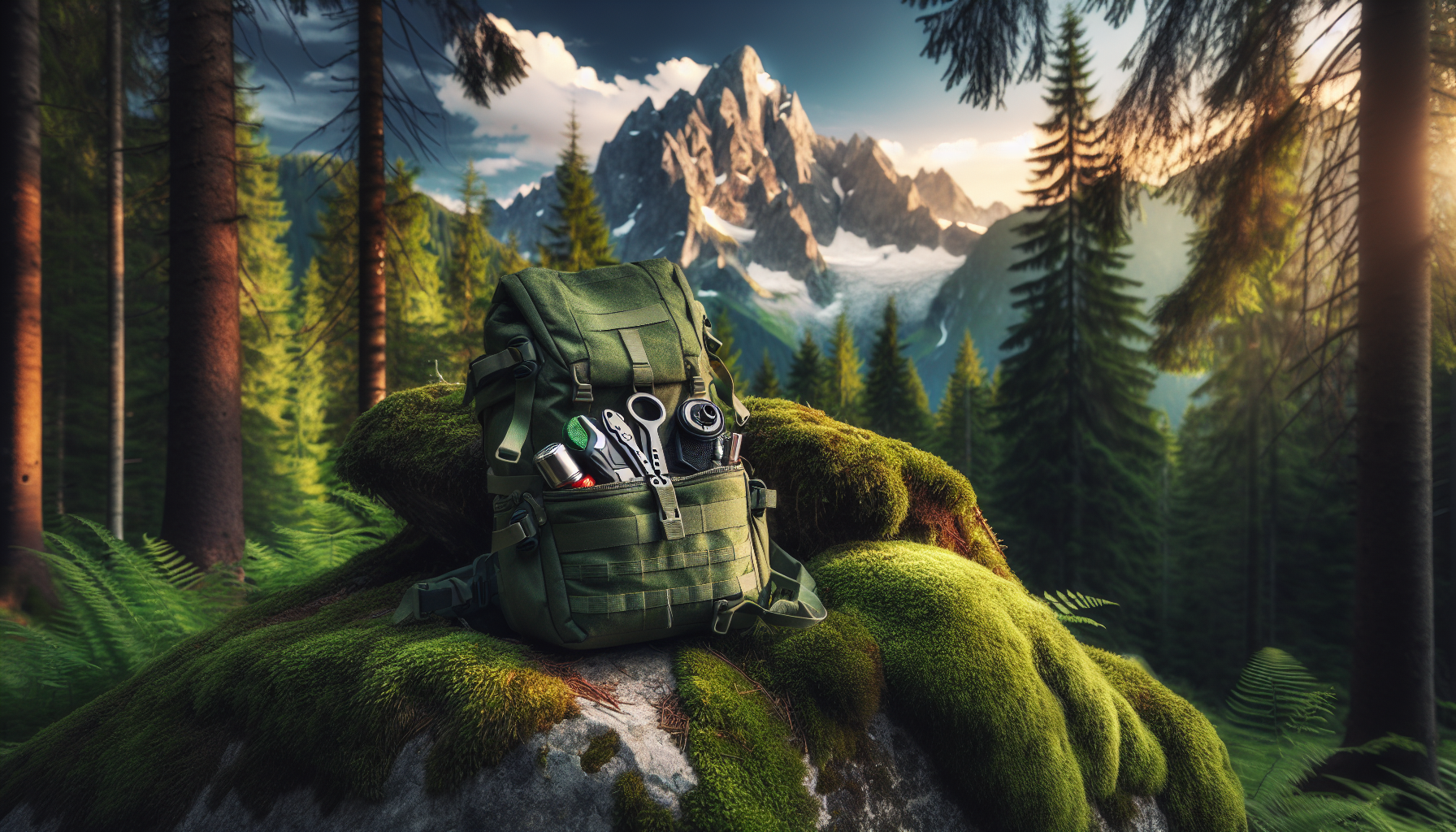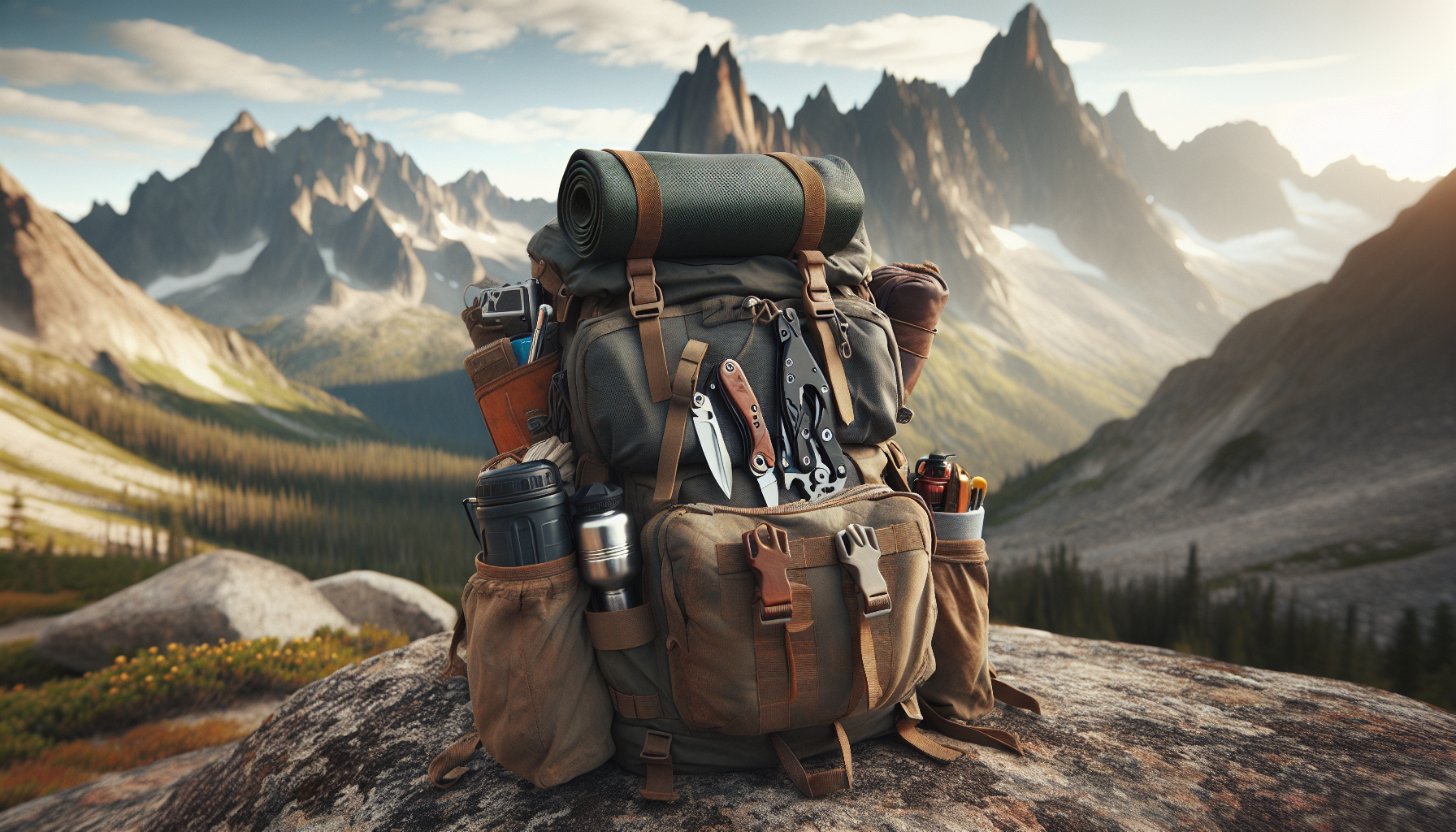Imagine you are about to embark on an exciting adventure into the great outdoors. Whether you plan on hiking through lush forests or camping in remote locations, it’s crucial to be prepared for unexpected situations. That’s where a survival kit comes in handy. Packed with essential items that could potentially save your life, this article will unveil the 8 crucial components you should never leave home without. From a trusty knife to a reliable light source, we’ve got you covered. So sit back, relax, and let’s dive into the world of survival kits together!
Shelter
When it comes to surviving in the great outdoors, having a shelter is of utmost importance. In your survival kit, you should always include a reliable tent. A tent provides you with a safe and dry space to sleep and seek refuge from the elements. Look for a tent that is lightweight and easy to set up, ensuring that you can quickly establish your shelter when needed.
In addition to a tent, it’s also a good idea to pack a tarp. A tarp can serve as an additional layer of protection against rain and wind. It can be used to cover the tent, create a makeshift roof, or even provide a dry spot to sit or store your gear. The versatility of a tarp makes it an essential item to have in your survival kit.
Lastly, don’t forget to pack a sleeping bag. A sleeping bag is crucial for staying warm and comfortable during the night. Look for a sleeping bag that is suited to the climate you’ll be in, ensuring that it provides adequate insulation and is water-resistant. Your sleeping bag should be lightweight and easy to pack, allowing you to carry it with ease during your outdoor adventures.
Fire
Fire is not only a source of warmth but also a valuable tool in survival situations. It can help you cook food, purify water, and provide light and comfort. To start a fire, it’s important to include a lighter or waterproof matches in your survival kit. These items are reliable and easy to use, allowing you to quickly ignite a flame when needed.
Having a firestarter in your kit is also essential. A firestarter, such as a fire rod or magnesium block, can help in situations where starting a fire with traditional methods may be challenging. These compact tools create sparks that can easily ignite kindling or fuel, making fire-starting a breeze. Including a firestarter in your survival kit ensures you’ll be able to start a fire even in damp or unfavorable conditions.

Water
Access to clean drinking water is crucial for survival. In your survival kit, be sure to include water purification tablets. These tablets are designed to kill bacteria and viruses, making water safe to drink. They are lightweight and take up little space, making them a convenient addition to your kit.
A water filter is another essential item to have in your survival kit. Filters provide an additional layer of protection by removing impurities and contaminants from water sources. Look for a compact and lightweight water filter that is easy to use and maintain. With a water filter, you can confidently drink water from natural sources, ensuring your hydration needs are met.
Having a water container is also important. Look for a durable and portable container that can hold a sufficient amount of water. Opt for a container with a secure lid to prevent leakage and contamination. With a water container in your survival kit, you can collect and store water for future use, ensuring you stay hydrated in any situation.
Food
In a survival situation, having access to food is crucial for maintaining your energy and wellbeing. Emergency rations, often in the form of freeze-dried meals, are a convenient food option to include in your survival kit. These rations are lightweight, easy to prepare, and have a long shelf life. They provide you with essential nutrients and calories, keeping you nourished during stressful times.
Energy bars are another excellent item to have in your survival kit. These compact and high-calorie bars are designed to provide a quick burst of energy. They are lightweight, easily portable, and an ideal snack to have on the go. Energy bars are a convenient solution when you need an immediate source of sustenance.
Canned goods are also worth considering as part of your survival kit. Look for canned goods with long shelf lives that provide a variety of nutrients. They can be a comforting and nutritious meal option when fresh food is scarce. Just be sure to pack a can opener alongside your canned goods to ensure you can easily access the contents.

First Aid
In any emergency situation, being prepared to handle injuries is crucial. A well-stocked first aid kit is a must-have item in your survival kit. Start by including an assortment of bandages of different sizes and types. These bandages can be used to cover wounds, protect blisters, or provide support to sprained joints. It’s essential to have a variety of bandages to cater to different injuries.
Antiseptic wipes are another important item to have in your first aid kit. These wipes help clean and disinfect wounds to prevent infection. They are individually packaged and easy to use, ensuring proper hygiene in a wilderness setting. Including antiseptic wipes allows you to keep wounds clean, promoting faster healing and reducing the risk of complications.
Pain relievers are also essential for addressing discomfort or pain caused by injuries. Include over-the-counter pain relievers such as ibuprofen or acetaminophen in your first aid kit. These medications can help alleviate headaches, muscle pain, and other discomforts that may arise during a survival situation. Remember to follow the recommended dosage instructions and consult a healthcare professional if needed.
Navigation
When venturing into unknown territory, having reliable navigation tools can be a lifesaver. A compass is an essential item to include in your survival kit. It allows you to determine your direction and navigate effectively, even without the use of modern technology. Acquiring basic compass skills and understanding how to read a map can help you find your way back to safety.
While a compass is vital, it’s also important to have a map of the area you’ll be exploring. A topographic map provides valuable information about the terrain, water sources, and potential hazards in the area. Familiarize yourself with the map before your adventure, and keep it accessible in a waterproof sleeve or bag.
Although not essential but incredibly helpful, a GPS device can provide an added layer of navigation assistance. A handheld GPS device allows you to pinpoint your exact location, track your movements, and plan routes. It can be particularly useful in situations where visibility is limited or when you need to call for help.
Communication
Staying connected and being able to communicate with others is vital during emergencies. In your survival kit, include a whistle. A whistle is a simple yet effective tool for alerting others to your presence. It’s loud, compact, and doesn’t require much effort to use. Having a whistle can greatly increase your chances of being rescued or receiving assistance in a critical situation.
A signal mirror is another handy communication tool to have. It can be used to reflect sunlight, creating flashes that catch the attention of search and rescue teams or nearby individuals. Signal mirrors are lightweight and easy to carry, making them a valuable addition to your survival kit.
In today’s world, having access to information and emergency broadcasts is crucial. Including an emergency radio in your survival kit allows you to listen to local authorities and receive important updates. Look for a compact and battery-powered radio that can tune into both AM and FM frequencies. An emergency radio ensures you stay informed and can respond to changing circumstances effectively.
Tools
Having the right tools can make a significant difference in a survival situation. One of the most versatile tools to include in your survival kit is a knife. A sturdy and sharp knife can be used for various tasks such as cutting cordage, preparing food, or creating shelter. Look for a knife with a fixed blade, as they tend to be more durable and reliable.
A multi-tool is another valuable item to have. It combines a variety of tools such as pliers, screwdrivers, and saws into one compact device. With a multi-tool, you have the flexibility to tackle various tasks and address unexpected challenges. Look for a multi-tool that is durable and easy to use, ensuring it will withstand the demands of a survival situation.
Duct tape is often referred to as the “ultimate” survival tool, and for a good reason. It has countless uses, from repairing gear and clothing to creating makeshift splints or shelters. Pack a small roll of duct tape in your survival kit, and you’ll be surprised at how many problems it can help solve.
Lighting
Having a reliable source of light can greatly enhance your survival experience. A headlamp is an excellent lighting option to include in your survival kit. It allows you to keep your hands free while still illuminating your surroundings. Look for a headlamp that is lightweight, adjustable, and has a long battery life. A headlamp provides a convenient and portable lighting solution for various tasks and situations.
A flashlight is another important lighting tool to have. Pack a compact and durable flashlight that is easy to operate and produces a bright beam. A flashlight can be used to navigate in the dark, signal for help, or inspect your surroundings. With a flashlight in your survival kit, you’ll always have a reliable source of light at your disposal.
Glow sticks are a lightweight and long-lasting lighting option for emergencies. They are easy to use, require no batteries, and are visible from a distance. The glowing light emitted by glow sticks can serve as a beacon, guiding others to your location or indicating your presence in low-light conditions. Including a few glow sticks in your survival kit can greatly enhance your visibility and safety.
Protection
When facing uncertain situations, personal safety should always be a top priority. Pepper spray is a valuable tool for self-defense and should be included in your survival kit, especially if you will be in remote or unfamiliar areas. It can disorient and immobilize potential threats, giving you time to escape or seek help. Remember to familiarize yourself with the proper use of pepper spray and exercise caution when handling it.
An emergency blanket is another item that provides crucial protection in survival situations. These lightweight and compact blankets reflect and retain body heat, helping to prevent hypothermia in cold environments. Emergency blankets are often made of durable and insulating materials such as Mylar. They can also be used as a makeshift shelter or ground cover if needed.
Lastly, don’t forget to include a whistle in your survival kit. A whistle can be used as a signaling device or to alert others to your presence. It can carry sound over long distances and is an effective tool for communication in emergency situations. A whistle is small, lightweight, and an invaluable addition to your survival kit.
By including these essential items in your survival kit, you’ll be well-prepared to handle a wide range of challenges and emergencies in the great outdoors. Remember to regularly check and replenish your supplies, ensuring that your kit remains up to date and ready for any adventure. Stay safe, stay prepared, and enjoy your outdoor experiences to the fullest.
